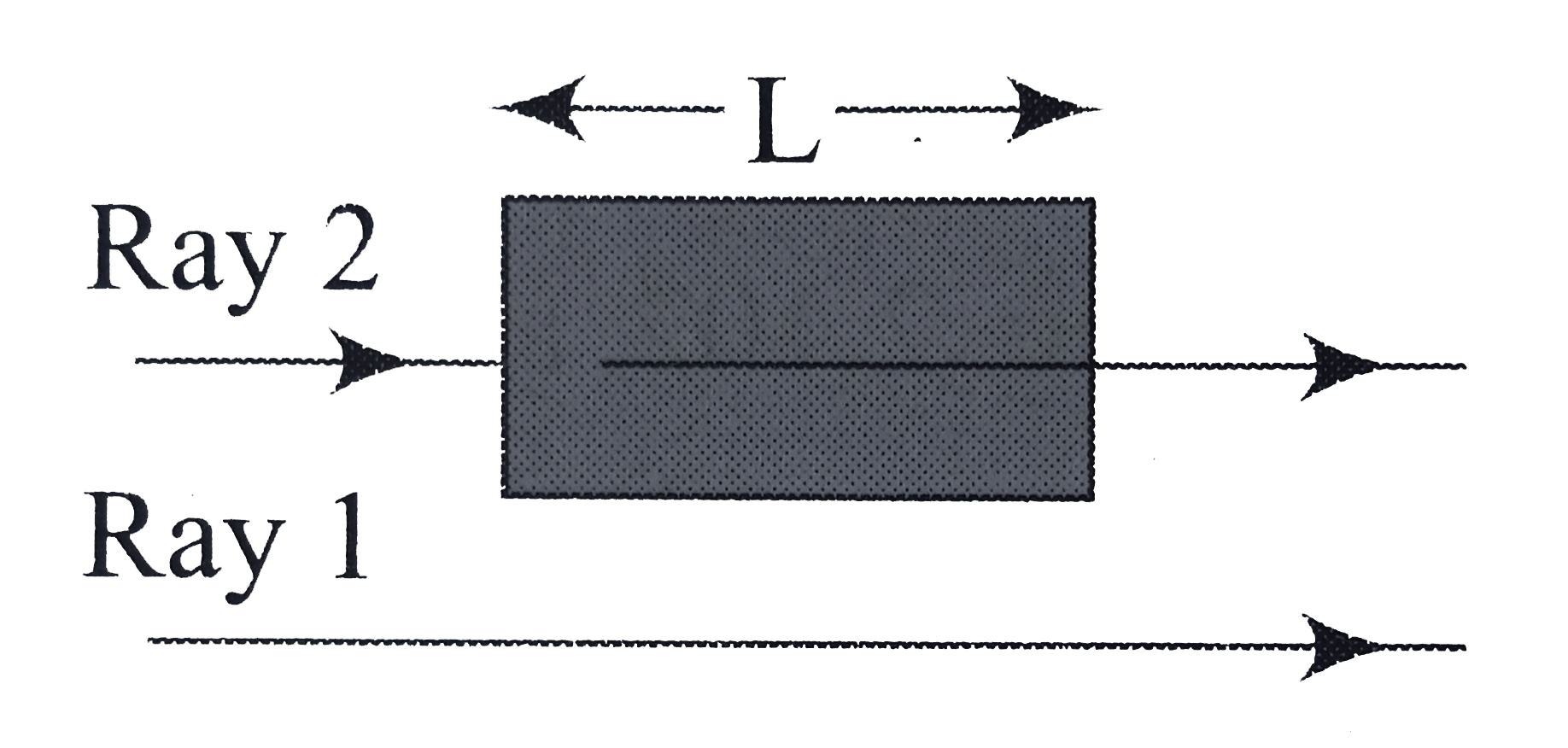The resultant amplitude of a vibrating particle by the superposition of the two waves
y1=asin[ωt+π3] and y2=asinωt isSolution in Gujrati
a
√2a
2a
√3a
The correct Answer is:D
y1=asin(ωt+π3) and y2=asinωt
A=√a21+a22+2a1a2cosϕ where ϕ=π3
=√a2+a2+2aacos(π3)=√3a
Topper's Solved these Questions
- WAVE OPTICSBOOK - ALLEN CHAPTER - WAVE OPTICSEXERCISE - Exercise 2 (Brain Teasures)
22 Videos
- WAVE OPTICSBOOK - ALLEN CHAPTER - WAVE OPTICSEXERCISE - Exercise 3 (Miscellaneous type Questions)
27 Videos
- WAVE OPTICSBOOK - ALLEN CHAPTER - WAVE OPTICSEXERCISE - Example 15
1 Videos
- UNIT & DIMENSIONS, BASIC MATHS AND VECTOR BOOK - ALLEN CHAPTER - UNIT & DIMENSIONS, BASIC MATHS AND VECTOR EXERCISE - Exercise (J-A)
7 Videos
Similar Questions
As shown in figure waves with identical wavelengths and amplitudes and which are intially in phase travel through difference media. Ray 1 travels through air and Ray 2 through a transparent medium for equal length L, in four different situations. Rays reach a common point on the screen. The number of wavelengths in length L is N2 for Ray 2 and N1 for Ray 1. In the following table, values of N1 and N2 are given for all four situations. The order or the situations according to the intensity of the light at the common point in descending order is Situations
1 2 3 4
N1 2.75 1.80 3.00 3.25
N2 2.75 2.80 3.25 4.00

View SolutionStatement-1: if white light is used in YDSE, then the central bright fringe will be white.
Statement-2: In case of white light used in YDSE all the wavelengths produce their zero order maxima at the same position.
View Solution_S01_033_Q01.png)
In a typical young's double slit experiment a point source of monochromatic light is kept as shown in the figure. If the source is given an instantaneous velocity v=1 mm per second towards the screen, then the instantaneous velocity of central maxima is given as α×10−βcm/s upward in scientific notation find the value of α+β
View SolutionMatch List I with List II and select the correct answer using the codes given below the lists :

View SolutionEquation for two waves is given as y_(1)=asin(omegat+phi_(1)), y_(2)=asin(omegat+phi_(2)) . If ampitude and time period of resultant wave does not change, then calculate (phi_(1)-phi_(2)) .
View SolutionThe amplitude of the vibrating particle due to superposition of two SHMs,
y1=sin(ωt+π3)andy2=sinωt is :
View SolutionIf two waves represented by y1=4sinωt and y2=3sin(ωt+π3) interfere at a point find out the amplitude of the resulting wave
View Solutionit the two waves represented dy y_(1)=4cos omegat and y_(2)=3 cos(omegat+pi//3) interfere at a point, then the amplitude of the resulting wave will be about
View SolutionTwo sinusoidal waves are superposed. Their equations are
y1=Asin(kx−ωt+π6)andy2=Asin(kx−ωt−π6)
the equation of their resultant is
View SolutionThe resultant ampiltude of a vibrating particle by the superposition of the two waves y_(1) = a sin ( omega t + (pi)/(3)) and y_(2) = a sin omega t is :
View SolutionThe displacement of two interfering light waves are given by y1=3sinωt,y2=4sin(ωt+π/2). The amplitude of the resultant wave is
View SolutionFor simple harmonic vibrations y_(1)=8cos omegat y_(2)=4 cos (omegat+(pi)/(2)) y_(3)=2cos (omegat+pi) y_(4)=cos(omegat+(3pi)/(2)) are superimposed on one another. The resulting amplitude and phase are respectively
View Solutiony_(1)=Asin(omegat-kx)&y_(2)=Asin(omegat-kx+delta) : these two equations are representing two waves. Then the amplitude of the resulting wave is
View SolutionTwo waves given by y_(1)=asinomegat and y_(2)=a sin (omegat+pi//2) reaching at a point superimpose. The resultant amplitude is
View Solutiony1=4sinωt तथा y2=3sin(ωt+π2) तरंगो के अध्यारोपण से बनने वाली तरंग का परिणामी आयाम होगा
View Solutiony1=asin(ωt+π3) तथा y2=asinωt तरंगों के अध्यारोपित होने से कम्पित कण का परिणामी आयाम होगा :
View Solution
